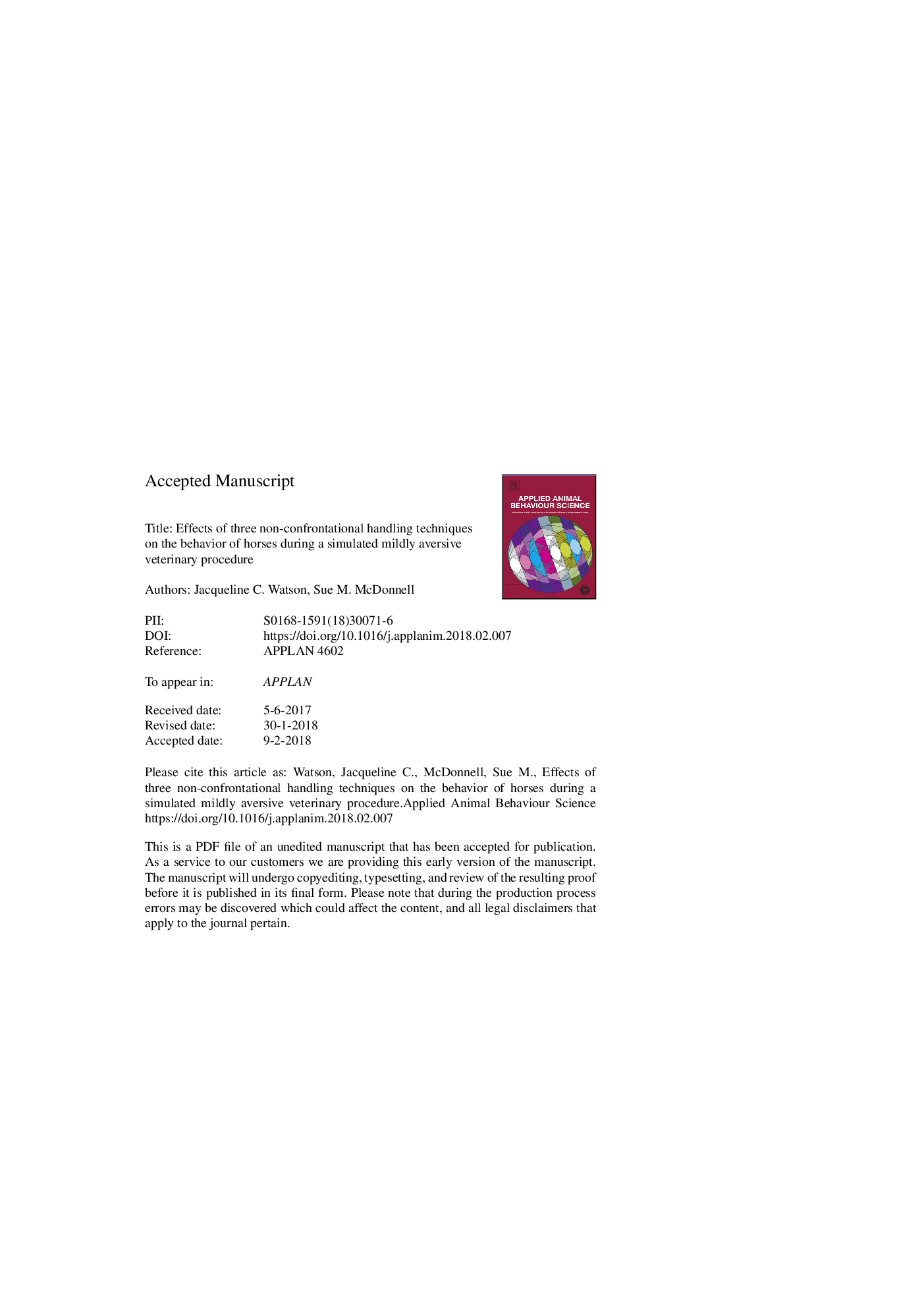ترجمه فارسی عنوان مقاله
اثرات سه تکنیک دست زدن به عدم مقابله با رفتار اسب در طی یک روش دامپزشکی شبیه سازی شده
عنوان انگلیسی
Effects of three non-confrontational handling techniques on the behavior of horses during a simulated mildly aversive veterinary procedure
| کد مقاله | سال انتشار | تعداد صفحات مقاله انگلیسی |
|---|---|---|
| 160605 | 2018 | 17 صفحه PDF |
منبع

Publisher : Elsevier - Science Direct (الزویر - ساینس دایرکت)
Journal : Applied Animal Behaviour Science, Available online 14 February 2018
ترجمه کلمات کلیدی
اسب، روش دامپزشکی، کم استرس، رسیدگی، غیر مقابله،
کلمات کلیدی انگلیسی
Horse; Veterinary procedure; Low-stress; Handling; Non-confrontational;

